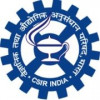Filter interviews by
CEG Test House And Research Centre Interview Questions and Answers
CEG Test House And Research Centre Interview Experiences
3 interviews found
Easy simple test related to quality
(2 Questions)
- Q1. What is soil explains its test
- Ans.
Soil is a natural resource made up of minerals, organic matter, water, and air, which supports plant growth.
Soil is composed of minerals, organic matter, water, and air.
It provides essential nutrients for plant growth.
Soil tests are conducted to determine its pH level, nutrient content, and composition.
Different types of soil tests include soil pH test, soil nutrient test, and soil composition test.
- Q2. What test are conducted for brick
- Ans.
Various tests are conducted for bricks to ensure quality and durability.
Compressive strength test to determine the maximum load a brick can bear
Water absorption test to assess the porosity of the brick
Efflorescence test to check for salt deposits on the surface
Dimensional stability test to ensure uniform size and shape
Soundness test to evaluate the resistance of bricks to breakage
Quality Engineer Interview Questions asked at other Companies
I applied via Walk-in
Interview Questionnaire
1 Question
- Q1. What's hplc
Interview Preparation Tips
Interview Questionnaire
1 Question
- Q1. Basic introduction, about UV, IR, HPLC
Interview Preparation Tips
Trainee Interview Questions asked at other Companies
Top trending discussions






Interview questions from similar companies

I applied via Naukri.com and was interviewed in Oct 2020. There was 1 interview round.
Interview Questionnaire
2 Questions
- Q1. Basic Introduction, Why u want to join this company, why u want to do this work?
- Q2. Strengths and weekness, Where do u see urself in x year?
Interview Preparation Tips

Business Analyst Interview Questions & Answers
Rapid Care Transcriptionposted on 27 Sep 2024
I applied via Naukri.com and was interviewed in Aug 2024. There were 2 interview rounds.
Nothing much just some idiotic questions. office has no member strength, they just call and make candidate wait for 4 hours and recruit referred candidates
(2 Questions)
- Q1. Even after attending all queries they did not bother to select and inform and selection process starts based on references.
- Q2. Reporting, analysis
Interview Preparation Tips
- Power Bi
- Reporting

Senior Software Engineer Interview Questions & Answers
Cotecna Inspection Indiaposted on 13 Sep 2023
I applied via Company Website and was interviewed before Sep 2022. There were 3 interview rounds.

(3 Questions)
- Q1. OOps, C#, MVC, WEBAPI, Azure
- Q2. Multiple inheritance concept in OOPs?
- Ans.
Multiple inheritance allows a class to inherit attributes and methods from more than one parent class.
In multiple inheritance, a class can inherit from two or more parent classes.
It can lead to the Diamond Problem where a class inherits from two classes that have a common ancestor.
Languages like C++ support multiple inheritance.
Example: class ChildClass : public ParentClass1, public ParentClass2 {}
- Q3. What is interface?
- Ans.
An interface in software development defines a contract for classes to implement, specifying methods and properties that must be included.
Interfaces in programming languages like Java, C#, and TypeScript allow for multiple inheritance by defining a set of methods that a class must implement.
Interfaces are used to enforce a common structure across different classes, promoting code reusability and maintainability.
Example...
Create Crud operation using angular with API.
Interview Preparation Tips

Senior Software Engineer Interview Questions & Answers
Cotecna Inspection Indiaposted on 22 Jan 2022
I applied via Naukri.com and was interviewed in Jul 2021. There were 4 interview rounds.
Interview Questionnaire
1 Question
- Q1. Question related asp.net core , C#
Interview Preparation Tips

Associate Interview Questions & Answers
Billed Right Healthcare Solutionsposted on 21 Feb 2025
I appeared for an interview in Jan 2025.
(1 Question)
- Q1. What is anatomy and physiology?
(1 Question)
- Q1. CPT&ICD Guidelines

I applied via Naukri.com and was interviewed before May 2023. There were 2 interview rounds.
There will be MCQ Questions. They will ask you to use internet and answer the questions.
They want to check your research skills.
(1 Question)
- Q1. If you are a fresher then you can easily clear the interview, Hr will ask normal questions about yourself and about your education background.
Interview Preparation Tips

Aptitude test of 30 min is conducted
CEG Test House And Research Centre Interview FAQs
Tell us how to improve this page.
Interview Questions for Popular Designations
CEG Test House And Research Centre Interview Process
based on 3 interviews
Interview experience
Interview Questions from Similar Companies
CEG Test House And Research Centre Reviews and Ratings
based on 43 reviews
Rating in categories
|
Geotechnical Engineer
8
salaries
| ₹2 L/yr - ₹4.5 L/yr |
|
Assistant Manager
8
salaries
| ₹3.6 L/yr - ₹4.8 L/yr |
|
Senior Executive
7
salaries
| ₹3 L/yr - ₹5.9 L/yr |
|
Analyst
7
salaries
| ₹2.2 L/yr - ₹4.7 L/yr |
|
Geologist
6
salaries
| ₹3 L/yr - ₹3.6 L/yr |

Markelytics Solutions

Jasper Colin

GfK MODE

Cotecna Inspection India
- Home >
- Interviews >
- CEG Test House And Research Centre Interview Questions











